
Theodor Seuss Geisel was an American children's author and cartoonist. He is known for his work writing and illustrating more than 60 books under the pen name Dr. Seuss. His work includes many of the most popular children's books of all time, selling over 600 million copies and being translated into more than 20 languages by the time of his death.

The Cat in the Hat is a 1957 children's book written and illustrated by American author Theodor Geisel, using the pen name Dr. Seuss. The story centers on a tall anthropomorphic cat who wears a red and white-striped top hat and a red bow tie. The Cat shows up at the house of Sally and her brother one rainy day when their mother is away. Despite the repeated objections of the children's fish, the Cat shows the children a few of his tricks in an attempt to entertain them. In the process, he and his companions, Thing One and Thing Two, wreck the house. As the children and the fish become more alarmed, the Cat produces a machine that he uses to clean everything up and disappears just before the children's mother comes home.
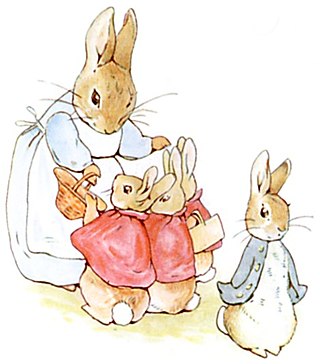
A picture book combines visual and verbal narratives in a book format, most often aimed at young children. With the narrative told primarily through text, they are distinct from comics, which do so primarily through sequential images.

Green Eggs and Ham is a children's book by Dr. Seuss. It was published by the Beginner Books imprint of Random House on August 12, 1960. The book follows Sam-I-am as he follows an unnamed man, repeatedly asking him if he would like to try some green eggs and ham before the man eventually tries it and likes it. Seuss began writing Green Eggs and Ham after his editor Bennett Cerf bet him $50 that he could not write an engaging children's book with a vocabulary of 50 words. Finding the challenge difficult, Seuss used notes, charts, and checklists to keep track of his progress. The book covers themes of conflict between individuals, though Seuss has said that it lacks any deeper meaning. Green Eggs and Ham was widely praised by critics for its writing and illustration, and challenge of writing a book in 50 words is regarded as a success. The book has been the subject of multiple adaptations, including a television series of the same name in 2019.

Horton Hatches the Egg is a children's book written and illustrated by Theodor Geisel under the pen name Dr. Seuss and published in 1940 by Random House. The book tells the story of Horton the Elephant, who is tricked into sitting on a bird's egg while its mother, Mayzie, takes a permanent vacation to Palm Beach. Horton endures a number of hardships but persists, often stating, "I meant what I said, and I said what I meant. An elephant's faithful, one hundred percent!" Ultimately, the egg hatches, revealing an elephant-bird, a creature with a blend of Mayzie's and Horton's features.

And to Think That I Saw It on Mulberry Street is Theodor Seuss Geisel's first children's book published under the name Dr. Seuss. First published by Vanguard Press in 1937, the story follows a boy named Marco, who describes a parade of imaginary people and vehicles traveling along a road, Mulberry Street, in an elaborate fantasy story he dreams up to tell his father at the end of his walk. However, when he arrives home, he decides instead to tell his father what he actually saw—a simple horse and wagon.

Yertle the Turtle and Other Stories is a picture book collection by Theodor Seuss Geisel, published under his more commonly known pseudonym of Dr. Seuss. It was first released by Random House Books on April 12, 1958, and is written in Seuss's trademark style, using a type of meter called anapestic tetrameter. Though it contains three short stories, it is mostly known for its first story, "Yertle the Turtle", in which the eponymous Yertle, king of the pond, stands on his subjects in an attempt to reach higher than the Moon—until the bottom turtle burps and he falls into the mud, ending his rule.

The Seven Lady Godivas: The True Facts Concerning History's Barest Family is a picture book of the tale of Lady Godiva, written and illustrated by Dr. Seuss. One of Seuss's few books written for adults, its original 1939 publication by Random House was a failure and was eventually remaindered. However, it later gained popularity as Seuss himself grew in fame, and was republished in 1987 by "multitudinous demand".
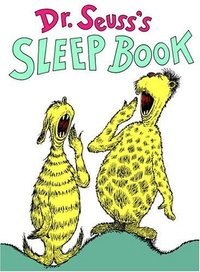
Dr. Seuss's Sleep Book, also known as The Sleep Book, is an American children's book written by Dr. Seuss in 1962. The story centers on the activity of sleep as readers follow the journey of many different characters preparing to slip into a deep slumber. This book documents the different sleeping activities that some of the creatures join in on: Jo and Mo Redd-Zoff participate in competitive sleep talking and a group "near Finnigan Fen" enjoys group sleepwalking. It opens with a small bug, named Van Vleck, yawning. This single yawn sets off a chain reaction, effectively putting "ninety-nine zillion nine trillion and two" creatures to sleep.
Roy McKie was an American writer and illustrator of children's books, most notably under the Beginner Books imprint. He illustrated many books penned by Theodor Seuss Geisel under the pen name Theo. LeSieg.
Beginner Books is the Random House imprint for young children ages 3–9, co-founded by Phyllis Cerf with Ted Geisel, more often known as Dr. Seuss, and his wife Helen Palmer Geisel. Their first book was Dr. Seuss's The Cat in the Hat (1957), whose title character appears in the brand's logo. Cerf compiled a list of 379 words as the basic vocabulary for young readers, along with another 20 slightly harder "emergency" words. No more than 200 words were taken from that list to write The Cat in the Hat. Subsequent books in the series were modeled on the same requirement.
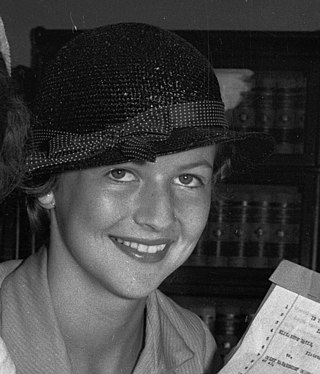
Phyllis Cerf Wagner, also known as Phyllis Fraser, was an American socialite, writer, publisher, and actress. She was a co-founder of Beginner Books.

I Am Not Going to Get Up Today! is a children's book written by Dr. Seuss and illustrated by James Stevenson. It was published by Random House on October 12, 1987. It is the only Dr. Seuss book not to be illustrated by Seuss himself. The book is told from the perspective of a boy who decides not to get out of bed as his family and neighbors try to convince him to get up. Audio versions have been released, including a cassette tape in 1988 and an audiobook read by the actor Jason Alexander in 2003.
Helen Marion Palmer Geisel, known professionally as Helen Palmer, was an American children's writer, editor, and philanthropist. She was also the Founder and Vice President of Beginner Books, and was married to fellow writer Theodor Seuss Geisel, better known as Dr. Seuss, from 1927 until her death.
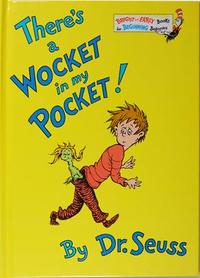
There's a Wocket in My Pocket is a short children's book by Dr. Seuss, published by Random House in 1974. It features a little boy talking about the strange creatures that live in his house, such as the yeps on the steps, the nooth grush on his toothbrush, the wasket in his basket, the zamp in a lamp, the yottle in the bottle, and the Nureau in the bureau.
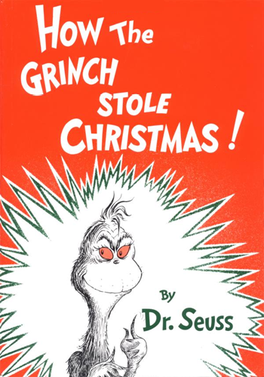
How the Grinch Stole Christmas! is a Christmas children's book by Theodor "Dr. Seuss" Geisel written in rhymed verse with illustrations by the author. It follows the Grinch, a cranky, solitary creature who attempts to thwart the public's Christmas plans by stealing Christmas gifts and decorations from the homes of the nearby town of Whoville on Christmas Eve. Miraculously, the Grinch realizes that Christmas is not all about money and presents.
Toon Books is a publisher of hardcover comic book early readers founded by Françoise Mouly. With titles by such creators as Geoffrey Hayes, Jay Lynch, Dean Haspiel, Eleanor Davis, and Mouly's collaborator and husband, Art Spiegelman, Toon Books promotes its line as "the first high-quality comics designed for children ages four and up".
Theodor Seuss Geisel, better known as Dr. Seuss, published over 60 children's books over the course of his long career. Though most were published under his well-known pseudonym, Dr. Seuss, he also authored a certain amount of books as Theo. LeSieg and one as Rosetta Stone.

Horse Museum is a Dr. Seuss book released by Random House Children's Books on September 3, 2019. It is based on an unfinished manuscript by Theodor Seuss Geisel completed by Australian illustrator Andrew Joyner. 250,000 copies were released of the first printing.
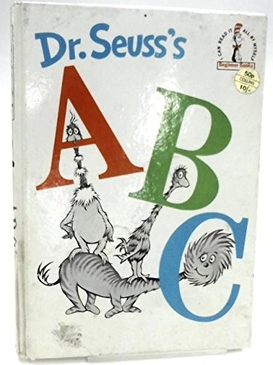
Dr. Seuss's ABC, otherwise referred to as The ABC, is a 1963 English language alphabet book written by Dr. Seuss starring two anthropomorphic yellow dogs named Ichabod and Izzy as they journey through the alphabet and meet characters whose names begin with each letter. It was read as an audiobook by British comedian Rik Mayall as part of the 2000 audio release The Dr. Seuss Collection.















